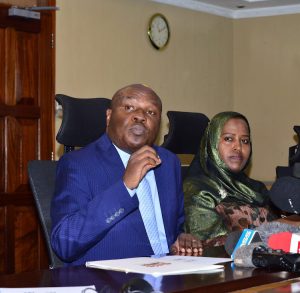The government has already initiated a pilot project in Nakuru and Mombasa with unemployed youth being urged to register their skills.
The government has unveiled a digitised National Skills Inventory in a significant leap towards modernising the management of workforce skills in country.
The initiative aims to centralise and streamline skills supply data in both public and private sectors.
Before this system, skills data was scattered across ministries, counties, departments, and agencies, lacking comprehensiveness and real-time updates.
With the database in place, the government can now enhance the job placement of unemployed youth by effectively aligning available skills to the local and international labour markets.
Addressing the press Monday, Labour and Skills Development Principal Secretary Shadrack Mwadime noted that this will also help in overcoming the previous challenges of fragmentation and outdated information.
“It will also help analyse the supply and demand of skills towards identifying skill gaps in Kenya,” Mwadime said.
“It will also ensure the country has human resource reserves to meet the local demand and that surplus labour is henceforth exported towards enhancing the inflow of remittances.”
The initiative, he said, demonstrates the government’s commitment to enhancing youth employment in the country.
It is well-aligned to the provisions of the Constitution which affirms the right of the youth to access employment, he said.
The database will be hosted on the National Employment Authority Integrated Management System (NEAIMS) enabling efficient data mining for insights into the country’s skills supply and demand.
Labour and Skills Development Shadrack Mwadime with other officials at his office on January 29, 2024.
It is accessible through the Ministry of Labour and Social Protection website https://labour.go.ke/ and directs applicants to a comprehensive form for skill registration.
The government has already initiated a pilot project in Nakuru and Mombasa with unemployed youth being urged to register their skills.
This effort is set to extend to other counties starting January 30, 2024.
The State Department for Internal Security and National Administration is being used to populate this inventory in the counties.
Mwadime at the same stated that the government is not only targeting unemployed persons but also those currently employed.
Employers in both public and private sectors are mandated to submit their Annual Employment Returns by February 16, 2024.
“This submission will contribute to the skills data of the employed workforce,” he stated.
Mwadime chairs an inter-departmental committee on National Skills Inventory tasked with the mandate of establishing a framework for mapping out the skills of all Kenyans seeking employment.
The committee is also tasked with mapping out the skills in the country, identifying the gaps in the most competitive and highly employable skills both within the country and abroad and making recommendations on the alignment of training programs to spur the development of skills that offer greater chances of employability locally and abroad.
Data from the Kenya National Bureau of Statistics (2021) the unemployment rate is 6.6 per cent.
The age groups of 20-24 and 25-29 continued to record the highest proportion of the unemployed at 16.3 per cent and 9.1 per cent, respectively.
In addition, the youth aged 20-24 have the highest rate of long-term unemployment which stood at 13.5 per cent.
The percentage of youth not in Employment, Education or Training (NEET) was recorded at 16.9 per cent.



